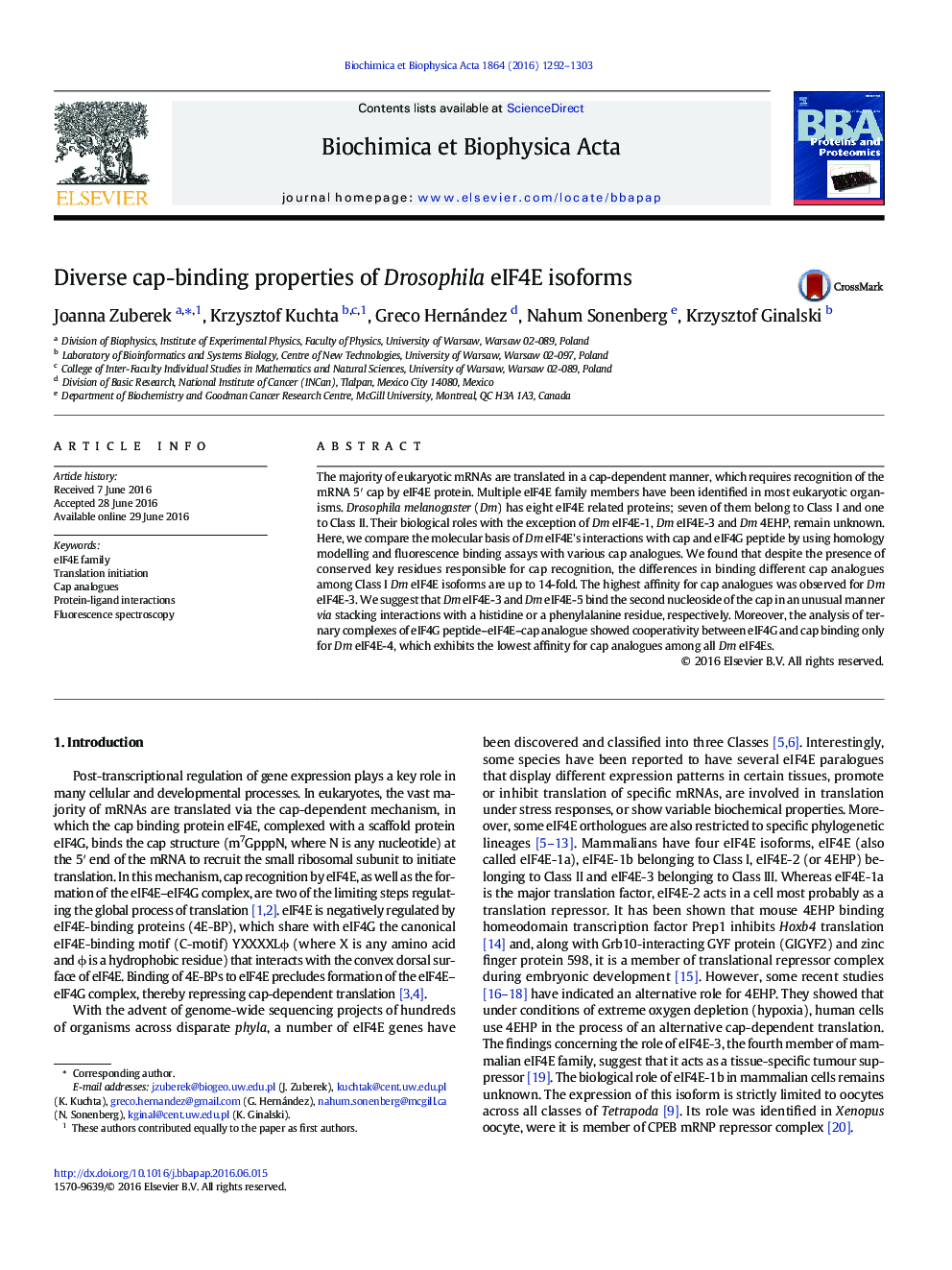| Article ID | Journal | Published Year | Pages | File Type |
|---|---|---|---|---|
| 10536751 | Biochimica et Biophysica Acta (BBA) - Proteins and Proteomics | 2016 | 12 Pages |
Abstract
The majority of eukaryotic mRNAs are translated in a cap-dependent manner, which requires recognition of the mRNA 5â² cap by eIF4E protein. Multiple eIF4E family members have been identified in most eukaryotic organisms. Drosophila melanogaster (Dm) has eight eIF4E related proteins; seven of them belong to Class I and one to Class II. Their biological roles with the exception of Dm eIF4E-1, Dm eIF4E-3 and Dm 4EHP, remain unknown. Here, we compare the molecular basis of Dm eIF4E's interactions with cap and eIF4G peptide by using homology modelling and fluorescence binding assays with various cap analogues. We found that despite the presence of conserved key residues responsible for cap recognition, the differences in binding different cap analogues among Class I Dm eIF4E isoforms are up to 14-fold. The highest affinity for cap analogues was observed for Dm eIF4E-3. We suggest that Dm eIF4E-3 and Dm eIF4E-5 bind the second nucleoside of the cap in an unusual manner via stacking interactions with a histidine or a phenylalanine residue, respectively. Moreover, the analysis of ternary complexes of eIF4G peptide-eIF4E-cap analogue showed cooperativity between eIF4G and cap binding only for Dm eIF4E-4, which exhibits the lowest affinity for cap analogues among all Dm eIF4Es.
Related Topics
Physical Sciences and Engineering
Chemistry
Analytical Chemistry
Authors
Joanna Zuberek, Krzysztof Kuchta, Greco Hernández, Nahum Sonenberg, Krzysztof Ginalski,
